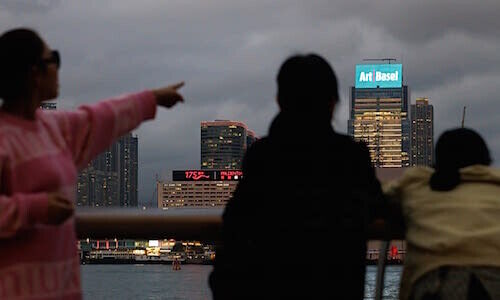Asia’s Unhappiness is Becoming a Thing
The annual World Happiness Report is back, and it shows much of Asia doing its utmost best to outdo last year’s dollop of relative gloom.
After a year’s respite, the happiness technocrats are back and they are once again doing the rounds in trying to gauge the relative perkiness of individuals living around the globe.
As finews.asia reported a little less than a year ago, the major financial centers in the region did surprisingly badly last year, with Singapore placing a distinctly average 25th worldwide, just behind Romania, not generally known as a land of widespread contentment.
Slipping Farther Down
Well, this year, the city-state slunk even farther down the rankings to place 30th, behind Kosovo, also not recognized as any center of contentment par excellence – like anywhere.
That fact only served to highlight a general region bathed in a veritable sea of relatively depressing purple and blue in the global map created by digital publisher Visual Capitalist. According to the map’s color scale, released in the middle of last week in rough tandem with the joint Gallup/UN report, happiness seems to lie more on the yellow-orange axle of the color scale - very likely mimicking the effect of a dose of well-needed sunlight dousing the average soul.
Usually More Positive
Australia and New Zealand were the only regional contenders in the general happiness quotient rankings, with their bright tangerine hues broadcasting their tenth and eleventh places to the world.
What is so surprising about the results this year is that Asian individuals, and employees in most financial centers, when surveyed internally at banks, are almost invariably more positive and optimistic than workers in other similar hubs around the world when it comes to growth rates and future economic prospects.
Reasonable Prosperity
But that fact, the map, and the figures, seem to hint at some deeper truths. A reasonable level of prosperity seems key, with the poorer countries in the world and the wider region, at least based on mean wealth per individual, such as India, Indonesia, and China, faring relatively feebly.
In fact, India placed 126th overall on the list with a score of 4.1, followed by Sri Lanka and Bangladesh. For context, they all placed far behind the likes of war-torn Ukraine, which came in at 105th and scored 4.9.
Somewhat Dour
Singapore seems to serve as a kind of corollary to that rule. Years of solid economic growth, and growing clout as the region's financial hub for international banks, as well as the slightly toned down but still-there intentions of becoming a crypto-asset hub and family office destination, don’t seem to change the fact that most of its residents seem ho-hum about a good many things. That might have something to do with the fact that entry into the so-called 1 percent club of the wealthiest citizens is the highest region-wide, something finews.asia recently commented on.
Hong Kong might even serve as confirmation of that relatively informal determination given it placed 86th just behind Algeria, a country no one thinks of as the poster child of widespread serenity. Its main similarity with the city-state is that it also takes three times the amount of money to join the 1 percent club in Hong Kong that is required on the neighboring mainland.
Changing Status
Although to be fair, many other factors are driving the happiness ratio in Hong Kong right now, key among them is its future as a financial hub even though many voices, including that of the University of Hong Kong, believe that its status is simply changing as it increasingly becomes a conduit for mainland finance.
The scores are based on a three-year running average, so it is unlikely that the current unsatisfaction is due to the general political environment or not, which seems to follow the tos and fros of what has become a relatively long-term geopolitical stand-off between the US and China, and something not likely helped by the fraught discussion of the recently enacted national security law.
Too Much, Too Little
At the end of the day, it might all just mean that having too much in relatively few hands is just about - although not quite - as bad as too little.
That is something that should give regional governments and legislators ample food for thought.




























